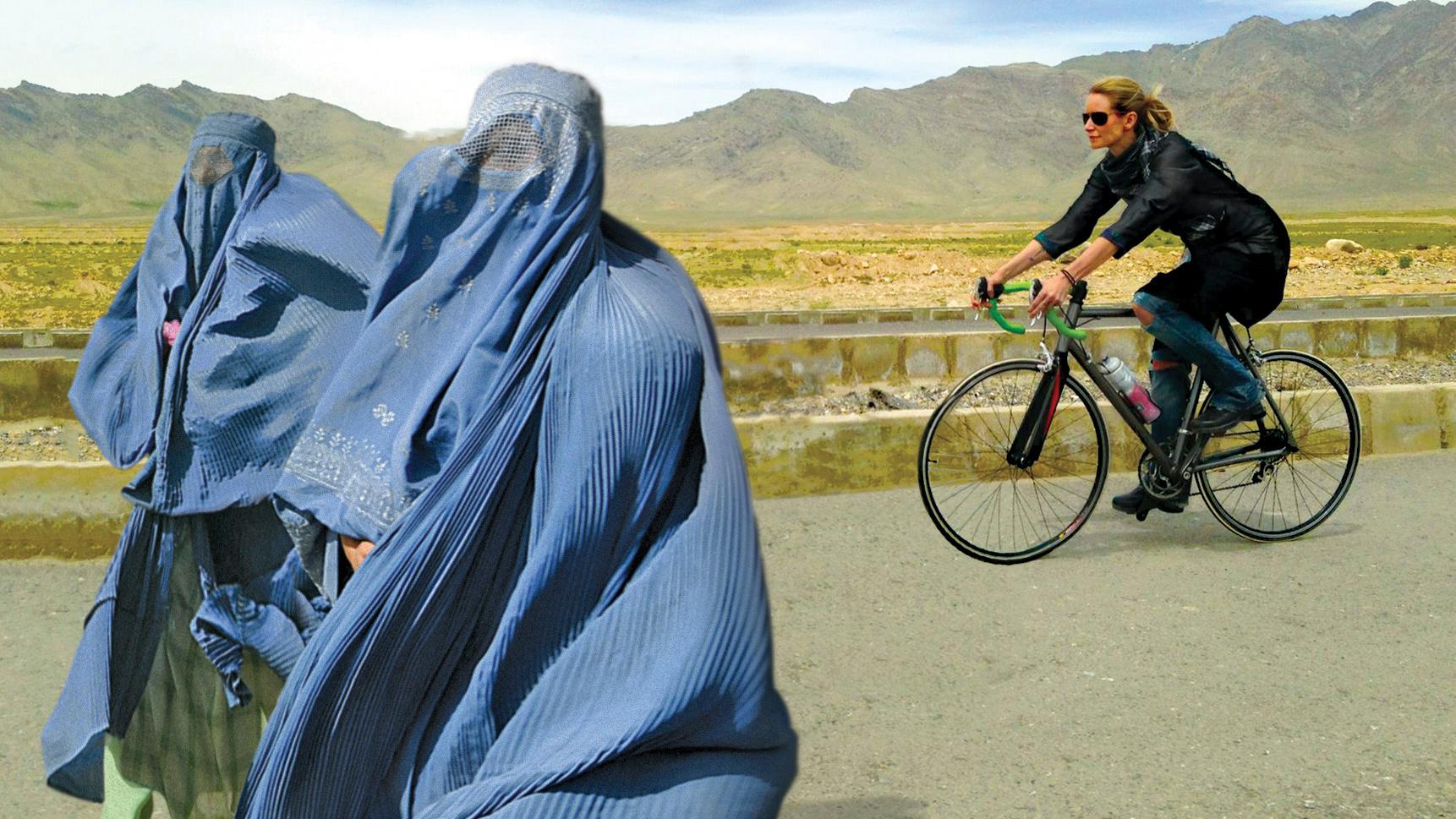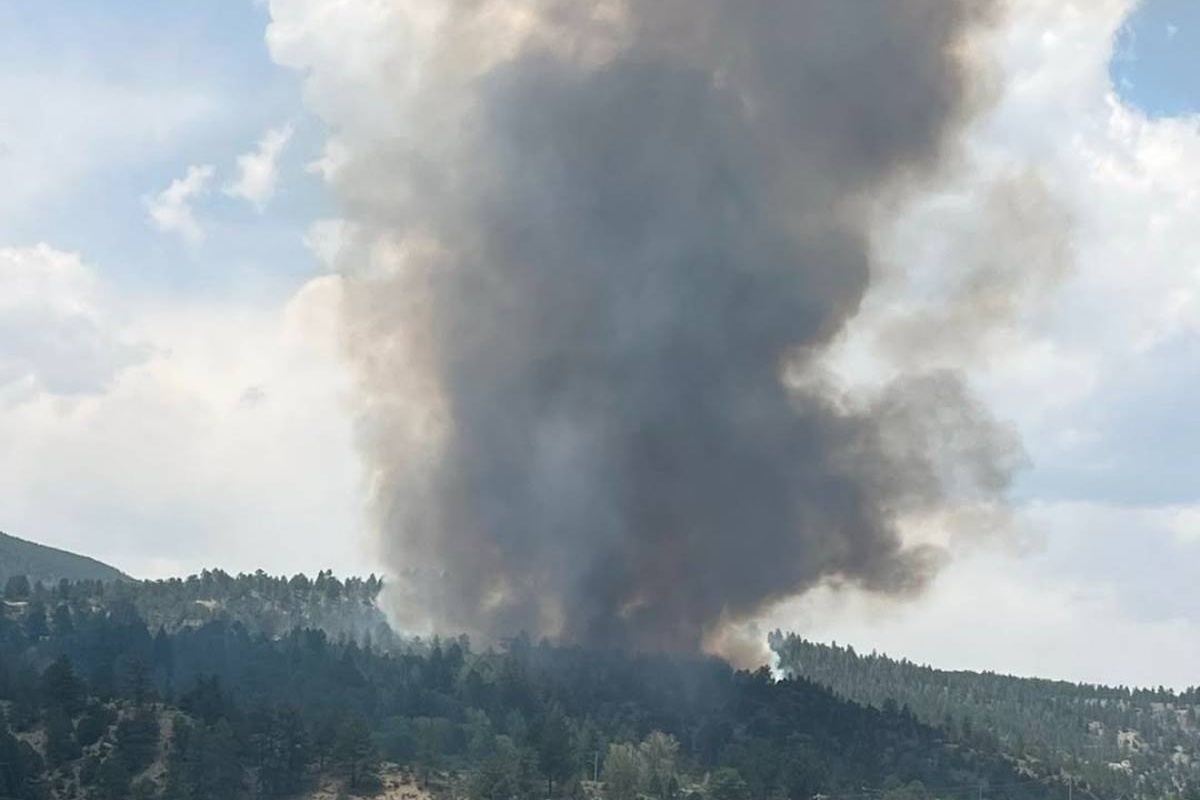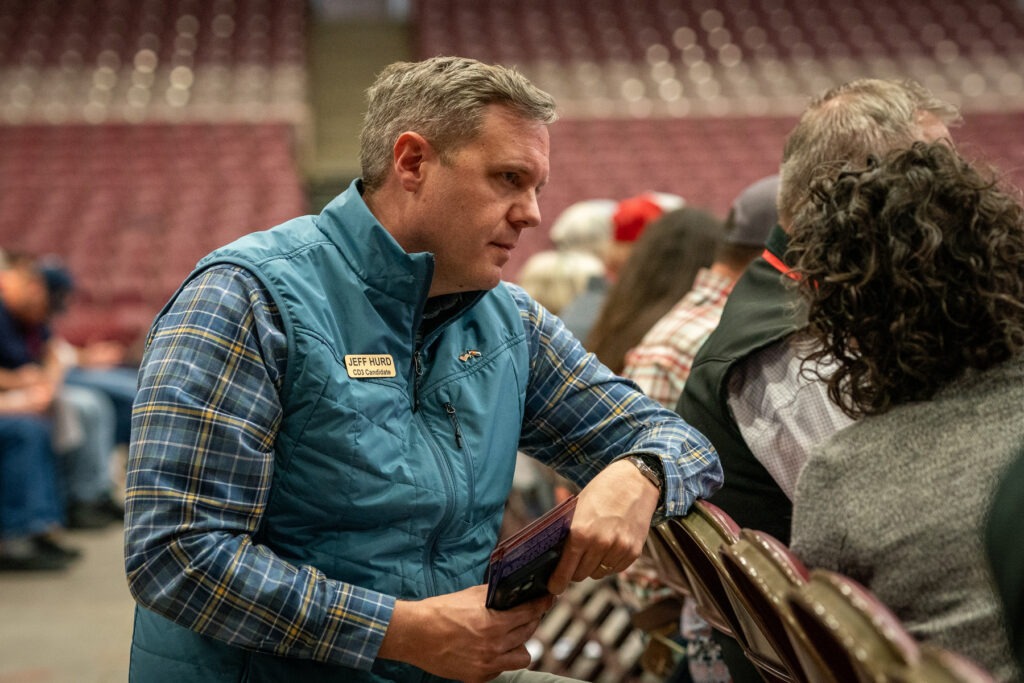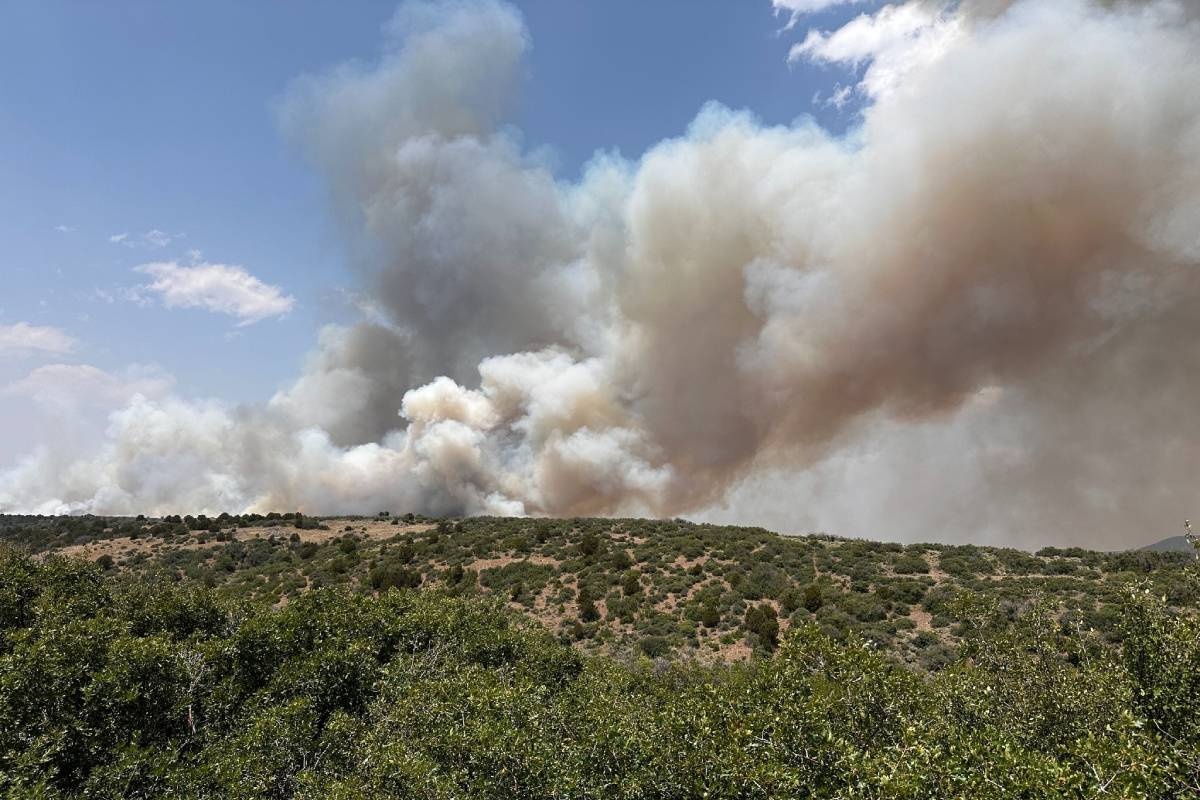
 When Shannon Galpin pedaled through Afghanistan's Panjshir mountains, she says she was the first woman to ride a bicycle there. Local women aren’t allowed to ride bikes, she says, because it's culturally inappropriate to straddle a bike seat.
When Shannon Galpin pedaled through Afghanistan's Panjshir mountains, she says she was the first woman to ride a bicycle there. Local women aren’t allowed to ride bikes, she says, because it's culturally inappropriate to straddle a bike seat.
The Breckenridge mom writes about her journey in her new book, “Mountain to Mountain.”
Last year National Geographic named Galpin “humanitarian of the year.”
She runs a non-profit, Mountain2Mountain, dedicated to providing educational opportunities to women and girls in conflict areas and has visited Afganistan 19 times.
The slideshow below shows the art of "Shamsia," an Afghan woman that Galpin met.
She spoke with CPR’s Lesley McClurg.
Audio for the this story will be available at noon.
Read an excerpt: Epilogue: A Two Wheeled Revolution
The final day of filming the Afghan National Women’s Cycling Team was one of the best days of my most recent trip and an unexpected culmination of my own years of biking in Afghanistan. We met up with Coach Seddiq whose white Land Cruiser was held four members of the women’s team, their bikes strapped to the roof. We drove outside of Kabul to start their ride. Heavily loaded, brightly painted, Pakistani trucks thundered by as the team prepared their bikes and Coach spoke with them. After meeting the Coach and some of the girls in October, I’d returned home to Breckenridge, and that January, I’d lunch with two girlfriends, Anna Brones and Sarah Menzies. I told Sarah about these girls and what an amazing film their story would make. As Anna had been with me on the previous visit to Afghanistan and had met the coach and the girls, she added her thoughts. By the end of lunch, our decision was made—Sarah would join me in Afghanistan to make a film about the women who dare to ride. We’d figure out the details, but for now, we have three and a half months to do logistics and preproduction, and get funding secured. I had set up a gear drive with local bike shops, and I reached out to my friend, Claudia Lopez. A fiery Colombian photographer, she was living in Boulder and we’d met several times for coffee and chats about travel, photography, art as activism, and the power of voice through different mediums. When I explained the project and proposed that she joined as a photographer to document it, she immediately said yes. Sarah brought on board Whitney Connor Clapper as co-director. Whitney was another Anna type—a woman who simply ‘gets shit done.’ She was affable, smart, and ready for anything. More importantly, as I discovered throughout our time in Afghanistan, she created a safe space for everyone to collaborate and create without ego—allowing the best of everyone to shine. With four passionate, high energy, creatives working together for the first time, our crew’s synergy may not have gelled the way it did without her subtle influence and incredible tirelessness. The crew complete, we made plans in the months leading up to the trip about logistics, filming, the arc of the story, and I worked hard to get yet another crew of first timers up to speed on all things Afghan. I collected 400 pounds of cycling gear and soon had a storage unit full of bikes and gear that we packed up to bring over to Kabul to distribute to the cycling federation for the men’s and women’s teams. Three months later, we were all four standing on the side of the highway leading north out of Kabul, watching a train of girls on bikes pedaling away for the first time. For the following two weeks, we filmed daily: training rides, b-roll of daily life and scenery in the city, and interviews—hours and hours of interviews. We interviewed Coach and four of the team riders, Mariam, Nazifa, Sadaf, and Farzana. We also secured an interview with female member of parliament and women’s right activist, Fawzia Koofi, to give us her perspectives on progress for women’s rights in Afghanistan, the uncertain future of these gains over the past ten years, and her thoughts on this team of women cyclists. Fawzia helped put into context the risk these girls undertake by challenging the taboo against women riding bikes. Though she’d been left outside in the sun to die by her family at birth when they discovered she was ‘just’ another girl. To her family’s surprise, she survived the exposure but had burns on her skin that remain today. They took her inside and raised her as part of the family. She survived the era of the Taliban regime, married a man she loved, had two daughters with him, and eventually became a member of Parliament, a author of the bestselling memoir The Favored Daughter, and a strong political force who seriously considered making a run for President in the 2014 elections. She freely admitted that these girls were on the front line, risking their lives to challenge the status quo but that without women willing to take on those risks, change would never occur. While it’s hard to imagine these young women having to fight that fight, the truth is that all Afghan women have to fight that fight. Young girls my daughter’s age who walk to school and risk harassment, threats, and acid attacks have to fight that fight. Women forced into arranged marriages with men forty years their senior have to fight that fight. Women who risk their lives and their honor to run for political office in order to fight for their rights and the future of their country are fighting that fight. If no one takes on the risk to make a stand, to use their voices, and to fight against the norms that oppress them, change will never occur. Change doesn’t happen without risk. Risk was a key theme we examined in the interviews with the girls and their families. They ride with their families’ permission, something Coach himself insists upon. Each time we spoke with the girls, they acknowledged the risks they were exposed to, whether be it traffic or harassment. While they downplayed that it was controversial, they also admitted the frustration of the logistics of being a female cyclist. The girls couldn’t meet up on their own for a group ride or even venture out by themselves. Sadaf and Farzana talked about riding with a brother or father occasionally, but the inability to train without Coach providing safe logistics was extremely limiting. The girls still tended to focus on the opportunities that cycling had provided, namely travel. Being part of the national cycling team had allowed them to acquire passports and travel outside Afghanistan for the first time. Exposed to other female cyclists at races in Pakistan and India, they were able to interact with their regional counterparts and learn from them. One rider, Nazifa, inspired the entire crew during her interviews. Nazifa was one of the smallest riders but had exhibited some of the deepest drive and strength as a rider. She completely opened up to us and bonded particularly with Sarah. Her large smile and tinkling laughter was a constant source of joy during filming with her. She had lost her father, and so her uncle was the main source of support for the family. He’d obviously instilled a sense of national pride in her, and this came out when she spoke of her desire to represent her country in the Olympics, to “show the world that Afghanistan is not just a drug country.” These girls are the next generation, the first to have access to computers and the internet—and therefore the first to know more broadly what is happening in the rest of the world. All that they are doing—going to university, riding bikes, racing, working outside the home, traveling outside of Afghanistan—all are risks, challenges to the status quo that most Afghan women have found themselves living under for at least the past forty years. Yet each time they are asked, they willingly accept the risks, in order to gain the opportunities. As Fawzia Koofi reiterated often in our interviews, “The time has come to stop referring to Afghan women as ‘poor Afghan women.’ That changes nothing. It is time to start calling them ‘strong Afghan women’ because that’s the only way to change the perception of Afghan women, and encourage them to succeed.” -- So there we were, standing on the side of a highway leading out of Kabul, watching the girls get their bikes off the roof of Coach’s white Land Cruiser for a training ride. We watched them pull out on the highway with apprehension. Men stared at the girls from all directions, cars honked, trucks swerved around each other in typical Afghan mayhem. The girls seemed so vulnerable on their skinny tires entering the fray. Standing on the side of the road, I felt the mayhem as dust swirled, and the wind gusts challenged the girls to hold their line. There was a sense on the crew of heavy responsibility and we all gut check ourselves as they pedaled off. None of us felt good about watching them ride here. This was seriously dangerous riding, not just because they were girls doing something Afghan women didn’t do, but because it was a trucking highway where driving a car was dangerous enough. The brightly painted, intricately decorated Pakistani trucks roared down the highways, creating huge gusts of dusty wind as they passed. I reminded myself that the girls weren’t doing this for us; this was their training ground and they faced these risks every time they pedaled. We just needed to document and share their incredible story. Standing on the side of an Afghan highway, I thought back to all the things that led me to this place: my rape, Larissa’s rape, Devon’s birth, ten years working as a sports trainer, a life lived in multiple countries, my love of mountain biking and exploration—all bricks in the foundation that brought me to Afghanistan and brought me deeper into my truest self. Working here, I began to realize that my deeper motivations could be a simple desire to believe that my own beauty could emerge through my heartbreak. That women’s voices matter. A desire to express and thus be understood through my own layers of complexity. The hope that reconciliation and forgiveness can be found within me for those who tried to break me. That if I can find forgiveness for the man that raped me and nearly killed me, I can find compassion in humanity itself. The young women who dare to ride their bikes are pedaling a revolution. They train on some of the most dangerous highways in the world, in a country where their existence is a challenge to the status quo, breaking a major cultural taboo. Like the American women who dared to ride in the late 1800s in America, they are refusing tradition in the post-Taliban era, taking advantage of all the opportunities before them. They serve as inspiration to women around the world, and to me. My hope is that the gains made for women in the past decade aren’t lost in the upcoming one as the international focus shifts, international support wanes, and the Afghans take on more control of their country. As they work to ready themselves for international competitions—with their eyes set on representing their country in a future Olympics—they are already demonstrating to the world the strength of Afghan women. They are the best possible example of the heart and soul behind Strength in Numbers—showing the world a different view of women in Afghanistan while showing Afghans the strength of women. One pedal stroke at a time. Reprinted from Mountain to Mountain by Shannon Galpin. Copyright © 2014 |









